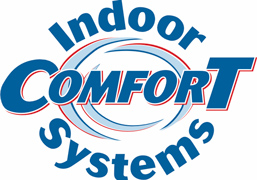We all like saving money on our monthly utility bills, but you should know there’s a way to keep costs down, even when you’re out of the house.
The secret is your thermostat. By using automatic schedules, you can structure its daily schedule around your personal preferences. This means establishing various temperature settings for when you’re home, away or even when you’re asleep.
If you’re willing to make these adjustments, you’ll be able to enjoy comfortable temperatures while also keeping more of your money. Here are some ways your thermostat can save you money in the summer:
While at Home
Pretty much whenever you’re home, you want to enjoy a comfortable temperature. For the most part, you probably have your thermostat lower in the summer if you’re indoors to appreciate the cool air.
But the ideal temperature for the summer is usually between 78 and 80 degrees Fahrenheit. This way, you’ll keep cool while keeping your energy bill more manageable.
While Away
When setting the temperature for whenever you’re gone, the majority of homeowners will set the thermostat higher for while they’re gone.
If your home is in a shady spot in a cooler climate, you can set the thermostat to temperatures as high as 88 degrees while no one is home before lowering it back to the sweet spot of 78-80 degrees once you’re home again. This way, your air conditioning system isn’t working around the clock to keep an empty house cool.
While Asleep
When it comes to sleeping in the summer, you want a temperature that’s nice and cool. You should try and keep things between 68-72 degrees Fahrenheit. This will keep you from getting too hot or too cold when you are trying to get some rest.
Additional Ways to Reduce Energy Use:
- Put in a smart thermostat: Switching to a smart thermostat in the summer is an excellent way to reduce energy costs by automatically adjusting to your lifestyle and home environment. It’ll take care of making changes while you are home or sleeping, before allowing it to get a little warmer when the house is empty. With reliable brands like the Lennox iComfort, you are able to adjust settings and schedules through your smartphone, tablet or laptop. Requesting smart thermostat installation in your Croydon home can be the simplest strategy for maintaining comfortable, yet energy-efficient temperatures no matter where you are.
- Replace current equipment with a newer HVAC system: A high-efficiency HVAC system saves money right from the start. If a system boasts high energy efficiency, your utility bills will be lower because it requires less energy to heat and cool your home. Air conditioning installation in Croydon is only a phone call away, so don’t hesitate to reach out to local pros like Indoor Comfort Systems HVAC who can set you up for success.
- Keep up with AC maintenance: Investing in or ignoring regular air conditioning maintenance in Croydon can have a significant impact on your utility bills. If you stay on top of cleaning key components like the coils, checking for damage and keeping vents clear of dust and debris, you may notice your HVAC system run more efficiently. Higher energy efficiency will also reduce strain on the unit and lowers operational costs, resulting in lower energy usage and subsequently, smaller bills.
- Replace your air filter regularly: Cleaning or replacing the air filter regularly saves money by improving airflow. When filters are clogged with dirt and debris, air conditioners have to work harder, and the added strain may impact the system’s life span and lead to breakdowns.
- Verify your attic has enough insulation: Insulation is a crucial component for any energy-efficient home, securing the hot air outside and the cool air inside during the summer. The North American Insulation Manufacturers Association (NAIMA) recommends that homes in the southern United States should have at least 13-14 inches of insulation, while colder climates do better with 16-18 inches.
- Inspect your ductwork: A leak in the air ducts could increase your energy bills much more than 20 percent, plus it can affect equipment such as your water heater, clothes dryer and other appliances throughout your home. Watching for signs of leaks and sealing them can address both concerns.
- Seal all other leaky spots in your home: Sealing leaky spots in your home with caulk, foam sealant or weather-stripping can help keep it cooler on hot summer days. You should also check for any gaps around windows, doors and even outdoor fixtures. Taking the time to seal up any leaks now can help you save a lot over time.
